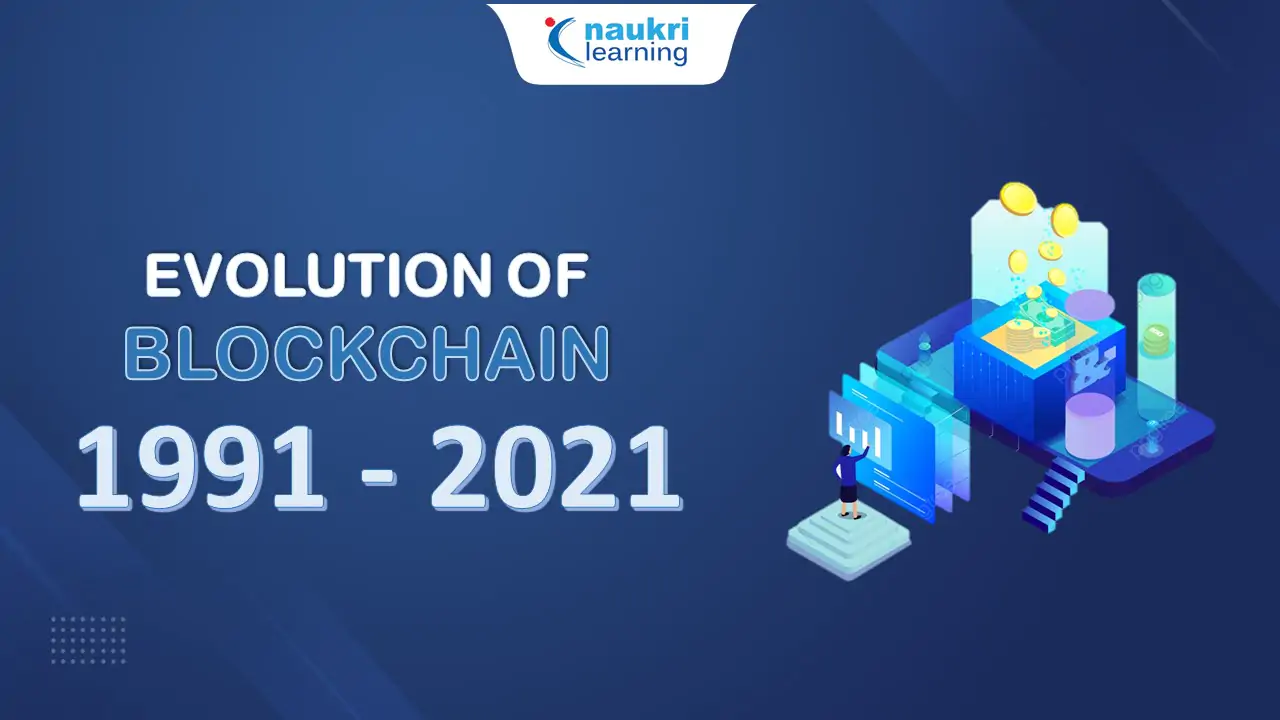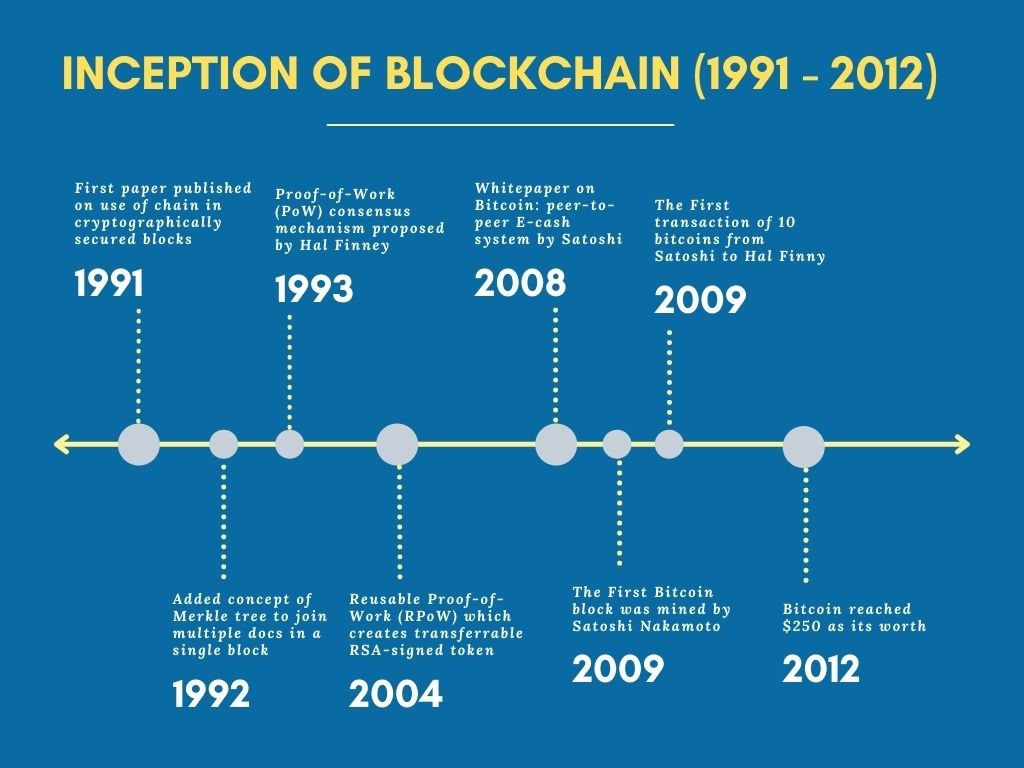History of Blockchain: 1991 to 2023 - Part 1 (1991 – 2012)
-

Blockchain Technology is in the limelight for the last few years. And it continues to grab the attention of many. Meanwhile, this article goes through the evolution of Blockchain from 1991 to the Present. It constitutes a timeline divided into three broader categories. Early inception stage, mid struggle stage, and the present stage of acceptance.
The Inception of Blockchain (1991 – 2008)
First, the below section covers the early-stage evolution of Blockchain from 1991 to 2008.1991
The evolution of Blockchain technology started in 1991. When research scientists Stuart Haber and W. Scott Stornetta were working on a practical solution to keep the backup of digital documents. Afterward, they aim to make the timestamps of those documents more secure. Later, they published their first paper expressing the use of a chain to cryptographically secure blocks in order to protect the integrity of past information.
1992
In 1992, they added the concept of Merkle trees. It helps to collect more documents in a single block. Thus, increasing the model’s efficiency. In 1993, Proof-of-Work (PoW) mechanism was proposed to protect against spam and other network abuses.2004
In 2004 Hal Finney, a computer scientist and cryptography expert developed a system known as RPoW (Reusable Proof of Work). The system creates a transferrable RSA-signed token by receiving a non-exchangeable (or non-fungible) hash cash based on a proof-of-work (PoW) token. Above all, the protocol solved the double-spending problem. Therefore, keeping the ownership of RSA tokens registered on the trusted server. Where other nodes can verify and keep the documents integrated.2008
Then in late 2008, a whitepaper came up named “Bitcoin: Peer-to-Peer E-cash system” by anonymous Satoshi Nakamoto. He used a hash cash PoW (Proof-of-Work) algorithm with software-based computing functions. Unlike, RPoW which uses hardware functionalities. Moreover, bitcoin introduces the concept of mining coins. It also ensures verifying the transactions among the decentralized nodes in the network.2009
Bitcoins are mined for a reward using the PoW algorithm by individual miners. Further, it is verified by the other decentralized nodes in the chain network.On Jan 3, 2009, the foundation of bitcoin settled. The first bitcoin block was mined by Satoshi Nakamoto with a reward of 50 bitcoins. Moreover, the first mined block is we call the “Genesis block of Bitcoin” today.
On Jan 12, 2009, the first transaction of 10 bitcoins from Satoshi to Hal Finny happened.
On Oct 31, 2009, the Bitcoin exchange marketplace launched publicly to trade bitcoins for actual money.
Furthermore, Nakamoto established the Bitcoin Talk Forum to broadcast news and information. Since 2009, the value of Bitcoin has aggressively grown. By 2012, Bitcoin reached $250 as its worth.Above all, Nakamoto set up the system limit up to 21 million bitcoins. Currently, more than 18 million bitcoins have already been mined. Moreover, depending on the present computation resources and rate of mining, by the year 2140, all bitcoins will be mined.
However, the person or community behind this popular discovery is still unknown. The figure of Satoshi Nakamoto disappeared and passed the wisdom of their knowledge to the generation of computer scientists and developers. Ever since then we have been hearing and reading about inventions of new blockchain-based applications worldwide.
Let’s conclude the early evolution of the Blockchain era with the diagram below.

Ref: https://www.shiksha.com/online-courses/articles/evolution-of-blockchain-technology/
-
This post is deleted!
-
Prepare for success with the Pegasystems PEGACPLSA88V1 exam! This certification, designed for Pega Certified Lead System Architects, validates your expertise in designing, building, and deploying complex Pega applications. With comprehensive coverage of advanced Pega topics like case management, decisioning, and data modeling, this exam ensures you are equipped to tackle real-world challenges. Boost your career prospects by showcasing your ability to implement Pega solutions effectively. Our study guides and practice tests will help you master the material, ensuring you’re fully prepared to pass the https://www.certsboard.com/PEGACPLSA88V1-dumps.html with confidence. Take the next step in your Pega journey today!

